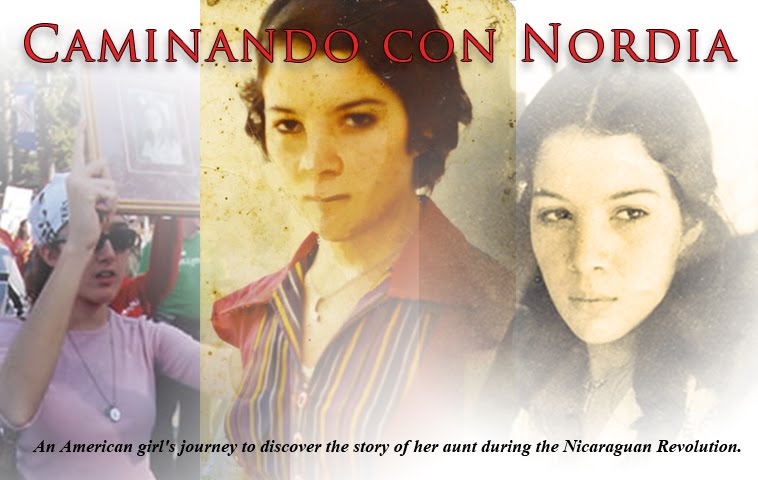As I've been doing my research on the Nicaraguan revolution, I am continually reminded of my grandmother. I can't help but wonder about the burden upon her shoulders. The mother of twelve children, she worried for the safety of them all, whether they were fighting in uprising, looking for refuge in the mountains, or even far away in distant countries. It was a heavy weight to carry and a testament to her fortitude.
In the "Pictures from a Revolution" documentary, Susan Meiselas talks with some mothers. Many of these women lost at least one child during the war. One woman spoke angrily with regret. She felt her son died in vain. Another one spoke of the shock and disbelief. One woman explained how her work blossomed as a distraction to numb the pain. I found it interesting how for the sake of peace and healing, forgiveness found its form. They could understand that the mothers of the Contras were mothers like them, mothers who mourn the loss of their children. They could bond in their shared suffering. Through the capability of finding empathy across rival sides, the substance and character of these women shines boldly.
Mothers give us life and nurture life. In all their various efforts, their work is fruitful and life-giving. Sadly, on this Nicaraguan Mother's Day, my thoughts also fall onto the dark clouds of death. Four years ago today, my Tía Alba was buried after losing her fight to cancer. My cousin Yocasta observed Mother's day with a funeral. Both of my grandmothers have passed so I am reserved to hold on to their memory. As I recall my Abuelita Dora Hidalgo de Gonzalez, I think of the trials she faced having to let go of her children, especially the loss of my Tía Nordia.
The following song by Nicaraguan musician, Carlos Mejía Godoy, really struck me personally because it echoes the pain of my aunt and grandmother. It's asking where is the tomb of the guerilla-fighter? The mother is asking and no one responds. My aunt was killed and bull-dozed in a hill with over 30 other youths. Their parents had to dig through the dirt to recover limbs. Only the head and a leg were found from Nordia. My grandmother was in denial. She refused to accept that Nordia had been killed. She thought they couldn't properly identify the remains. Nordia was still coming. She was hiding, she was lost, she was far away, but she was still coming home. And she waited. I don't know how long it took her to accept that Nordia wouldn't come back, if she ever did. I don't know if she waited for her until her dying day. I do know that they are together again now. They have both come home.
I leave you with this song in honor of all mothers who have lost a child, especially the ones who dwell in the mystery of not knowing where their children lie. May they find strength and peace.
La Tumba del Guerrillero
by Carlos Mejía Godoy
La tumba del guerrillero
dónde, dónde, dónde está
su madre está preguntando
nadie le responderá
la tumba del guerrillero
dónde, dónde, dónde está
el pueblo está preguntando
algún día lo sabrá.
Guerrillero, vos surgis en ríos
montes y praderas
en el viento que mece el chinchorro
del hijo del Juan
en las manos humildes y toscas
de la vivandera
en la Milpa donde el campesino
busca y busca el pan.
Como dijo el poeta trapense
de Solentiname
no quisieron decirnos el sitio
donde te encontrás
y por eso tu tumba es todito
nuestro territorio
en cada palmo de mi Nicaragua
ahí vos estás.
Guerrillero, vos nacés de nuevo
en la carabina
en los bronquios de Pedro el minero
que en Siuna murió
en los ojos de los miserables que en Acahualinca
aún espera sedientos
la aurora de la rendición.
Como dijo el poeta trapense
de Solentiname
no quisieron decirnos el sitio
donde te encontrás
y por eso tu tumba es todito
nuestro territorio
en cada palmo de mi Nicaragua
ahí vos estás.


